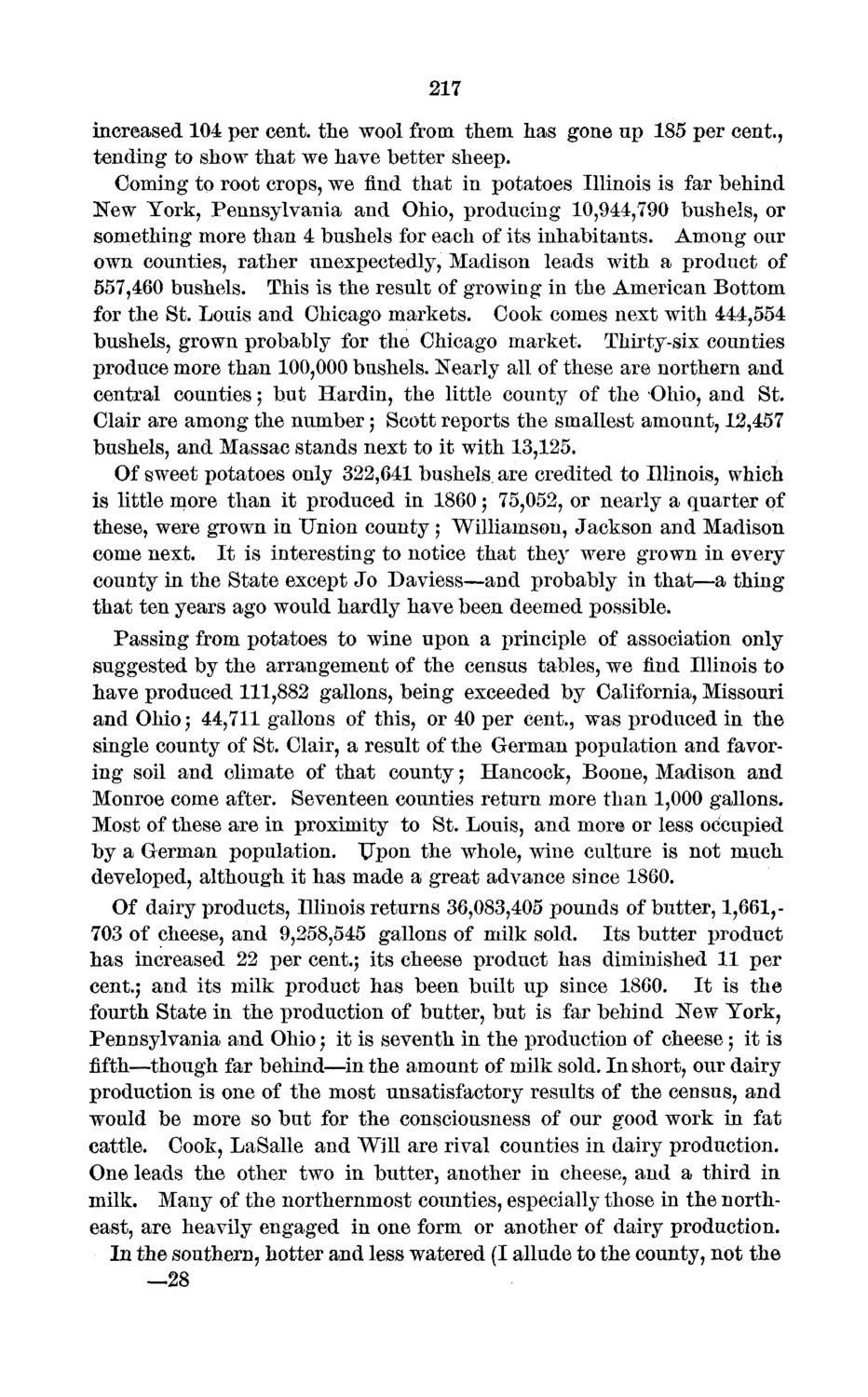| |
| |
Caption: Board of Trustees Minutes - 1873
This is a reduced-resolution page image for fast online browsing.

EXTRACTED TEXT FROM PAGE:
217 increased 104 per cent, the wool from them has gone up 185 per cent., tending to show that we have better sheep. Coming to root crops, we find that in potatoes Illinois is far behind New York, Pennsylvania and Ohio, producing 10,944,790 bushels, or something more than 4 bushels for each of its inhabitants. Among our own counties, rather unexpectedly, Madison leads with a product of 557,460 bushels. This is the result of growing in the American Bottom for the St. Louis and Chicago markets. Cook comes next with 444,554 bushels, grown probably for the Chicago market. Thirty-six counties produce more than 100,000 bushels. Nearly all of these are northern and central counties; but Hardin, the little county of the Ohio, and St. Clair are among the number 5 Scott reports the smallest amount, 12,457 bushels, and Massac stands next to it with 13,125. Of sweet potatoes only 322,641 bushels are credited to Illinois, which is little more than it produced in 1860; 75,052, or nearly a quarter of these, were grown in Union county 5 Williamson, Jackson and Madison come next. It is interesting to notice that they were grown in every county in the State except Jo Daviess—and probably in that—a thing that ten years ago would hardly have been deemed possible. Passing from potatoes to wine upon a principle of association only suggested by the arrangement of the census tables, we find Illinois to have produced 111,882 gallons, being exceeded by California, Missouri and Ohio; 44,711 gallons of this, or 40 per cent., was produced in the single county of St. Clair, a result of the German population and favoring soil and climate of that county ; Hancock, Boone, Madison and Monroe come after. Seventeen counties return more than 1,000 gallons. Most of these are in proximity to St. Louis, and more or less occupied by a German population. Upon the whole, wine culture is not much developed, although it has made a great advance since 1860. Of dairy products, Illinois returns 36,083,405 pounds of butter, 1,661,703 of cheese, and 9,258,545 gallons of milk sold. Its butter product has increased 22 per cent.5 its cheese product has diminished 11 per cent.; and its milk product has been built up since 1860. It is the fourth State in the production of butter, but is far behind New York, Pennsylvania and Ohio; it is seventh in the production of cheese; it is fifth—though far behind—in the amount of milk sold. In short, our dairy production is one of the most unsatisfactory results of the census, and would be more so but for the consciousness of our good work in fat cattle. Cook, LaSalle and Will are rival counties in dairy production. One leads the other two in butter, another in cheese, and a third in milk. Many of the northernmost counties, especially those in the northeast, are heavily engaged in one form or another of dairy production. In the southern, hotter and less watered (I allude to the county, not the —28
| |